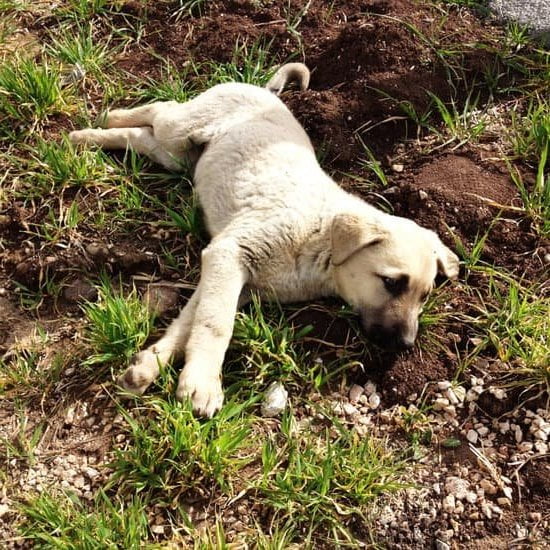As your furry companion ages, you may find that obedience training becomes more challenging. In this article, we will explore how to obedience train an older dog and provide valuable insight into the process. Obedience training for older dogs can be a rewarding experience that strengthens the bond between you and your beloved pet. However, it also comes with its unique set of challenges that require patience, understanding, and effective training methods.
Training an older dog requires a different approach compared to training a younger pup. It’s important to understand the specific obstacles that come with obedience training for senior dogs and how to approach them effectively. From assessing your dog’s behavior and temperament to setting realistic training goals, we will cover all aspects of obedience training for older dogs in this comprehensive guide.
In addition to exploring the challenges of obedience training for older dogs, we will also discuss how to choose the right methods, establish a consistent training schedule, overcome common obstacles, and incorporate positive reinforcement. By the end of this article, you will have a deeper understanding of how to successfully obedience train your older dog and maintain their newfound skills throughout their life.
Let’s dive into the world of training senior dogs and discover valuable techniques for a harmonious relationship with your aging canine companion.
Assessing Your Older Dog’s Behavior and Temperament for Training
As a dog gets older, their behavior and temperament may change, making obedience training a bit more challenging. Before starting to train an older dog, it’s important to assess their behavior and temperament to understand what you’re working with. This will help you tailor your training approach to best suit your dog’s needs.
One of the first things to consider when assessing your older dog’s behavior is any previous training they may have had. If they were previously trained and have forgotten commands, it might be easier to reteach them. On the other hand, if they have never had formal training, you may need to start from the beginning.
It’s also crucial to observe your older dog’s temperament. Some dogs may become more set in their ways as they age, while others may become more mellow and receptive to training. Understanding your dog’s temperament can help you determine which methods of obedience training will be most effective for them.
Finally, take note of any physical limitations or health issues that could impact your older dog’s ability to participate in obedience training. For example, arthritis or joint pain could make certain physical exercises difficult for them. Taking all these factors into consideration will guide you on how to obedience train an older dog effectively.
| Assessing Your Older Dog’s Behavior | Temperament for Training |
|---|---|
| Consider previous training | Observe changes in temperament |
| Note any physical limitations | Understand health issues impacting training |
Setting Realistic Training Goals for Your Older Dog
When it comes to obedience training an older dog, it’s important to set realistic goals. Unlike puppies, older dogs may have already established behaviors and habits that can be challenging to change. However, with the right approach and patience, you can still make progress in training your older canine companion.
Firstly, assess your dog’s current behavior and temperament. Take note of any existing obedience issues or problematic behaviors that you would like to work on. It’s also essential to consider your dog’s physical condition and any possible health issues that may affect their ability to participate in training.
Once you have a clear understanding of your older dog’s behavior and capabilities, you can then establish achievable training goals. Keep in mind that older dogs may not be able to learn as quickly as younger ones, so it’s crucial to be patient and understanding throughout the training process.
Choosing the right obedience training methods is also key when working with an older dog. Positive reinforcement techniques are often effective, using rewards such as treats or praise to motivate and encourage desired behaviors. Consistency in your training approach is essential for success in obedience training for older dogs.
| Training Goals | Considerations |
|---|---|
| Assess behavior and temperament | Take note of existing issues and health concerns |
| Establish achievable goals | Be patient and understanding with slower learning pace |
| Choose the right methods | Use positive reinforcement techniques for best results |
Choosing the Right Obedience Training Methods for Older Dogs
When it comes to obedience training an older dog, it’s important to choose the right training methods that are suitable for their age, behavior, and temperament. Older dogs may have different needs and limitations compared to younger dogs, so it’s crucial to tailor the training methods accordingly.
Understanding Your Older Dog’s Needs
Before selecting a specific obedience training method for your older dog, it’s essential to understand their needs and limitations. Take into consideration any physical ailments or health conditions that may affect their ability to perform certain commands or activities. Additionally, consider their overall behavior and temperament, as this will influence the type of training method that will be most effective for them.
Positive Reinforcement Training
One of the most effective obedience training methods for older dogs is positive reinforcement. This approach focuses on rewarding good behavior with treats, praise, or other rewards, rather than punishing undesirable behavior. Positive reinforcement is particularly beneficial for older dogs as it encourages them to learn at their own pace and motivates them to continue learning new commands.
Clicker Training
Clicker training can also be a great method for obedience training an older dog. This technique involves using a clicker device to mark desirable behaviors, followed by a reward. Clicker training is especially useful for older dogs with hearing impairments or those who may not respond well to verbal cues alone.
Ultimately, choosing the right obedience training method for your older dog requires patience and understanding of their individual needs. By tailoring the training approach to suit your dog’s age and capabilities, you can set them up for success in their obedience training journey.
Establishing a Consistent Training Schedule and Routine
When it comes to obedience training an older dog, consistency is key. Older dogs may have established habits and behaviors, so it’s important to establish a consistent training schedule and routine to help them understand what is expected of them. Here are some tips on how to create a consistent training schedule and routine for your older dog.
Assess Your Older Dog’s Needs
Before establishing a training schedule and routine, take the time to assess your older dog’s needs. Consider their energy levels, any physical limitations they may have, and their natural behavior patterns. This will help you tailor a training schedule that works for your dog’s specific needs.
Set Realistic Training Goals
It’s important to set realistic training goals for your older dog. Understand that it may take them longer to learn new behaviors or commands compared to a younger dog. Be patient and adjust your expectations accordingly when setting training goals for your older dog.
Stick to a Routine
Dogs thrive on routine, so it’s essential to stick to a consistent training schedule. Whether it’s daily sessions at the same time each day or certain cues that signal the start of a training session, sticking to a routine will help your older dog better understand what is expected of them. Consistency in both timing and expectations during training sessions will ultimately lead to better results.
By assessing your older dog’s needs, setting realistic goals, and sticking to a routine, you can effectively establish a consistent training schedule and routine that sets the stage for successful obedience training for your older dog.
Overcoming Common Obedience Training Challenges With Older Dogs
Obedience training an older dog can present some unique challenges compared to training a younger dog. Older dogs may have established habits and behaviors that are more difficult to change, and they may also be dealing with age-related issues such as decreased mobility or hearing loss. However, with the right approach and techniques, it is possible to overcome these challenges and effectively obedience train an older dog.
Here are some tips for overcoming common obedience training challenges with older dogs:
1. Be patient and understanding: Older dogs may take longer to learn new commands or behaviors, so it’s important to be patient and understanding throughout the training process. Avoid becoming frustrated or losing your temper, as this can have a negative impact on your dog’s willingness to learn.
2. Adapt the training methods: Consider using gentle and positive reinforcement-based training methods that take into account your older dog’s physical limitations and potential health issues. For example, instead of relying solely on verbal commands, incorporate hand signals or visual cues into your training routine.
3. Adjust the pace: Older dogs may not be able to handle long or intense training sessions. Break up the training into shorter, more frequent sessions to keep your dog engaged and prevent fatigue.
By understanding these common challenges and implementing the right strategies, you can successfully obedience train an older dog while ensuring their comfort and well-being throughout the process. Remember that every dog is different, so be sure to tailor your approach based on your individual pet’s needs and capabilities.
Incorporating Positive Reinforcement and Rewards in Obedience Training
When it comes to obedience training an older dog, incorporating positive reinforcement and rewards is essential for success. Older dogs may have developed habits and behaviors that are deeply ingrained, so using positive reinforcement can help motivate them to learn new behaviors. Here are some effective ways to incorporate positive reinforcement and rewards in obedience training for older dogs:
1. Use treats: Treats can be a powerful motivator for older dogs. Choose soft, bite-sized treats that your dog enjoys and use them as a reward for following commands or displaying good behavior during training sessions.
2. Verbal praise: Older dogs respond well to verbal praise, so make sure to shower them with plenty of encouragement and praise when they exhibit the desired behavior. A simple “good boy” or “good girl” can go a long way in reinforcing their obedience.
3. Toys: For some older dogs, playtime with their favorite toy can be a great reward for good behavior. Incorporate their favorite toy into training sessions and use it as a reward for following commands or displaying obedience.
It’s important to remember that every dog is different, so it may take some trial and error to determine which rewards work best for your older dog. The key is to find what motivates your dog and use it as a positive reinforcement during obedience training sessions.
By incorporating positive reinforcement and rewards into your obedience training efforts, you can create a more enjoyable experience for your older dog while also increasing the likelihood of successful behavior modification.
Remember that patience and consistency are also crucial when using positive reinforcement in obedience training for older dogs; over time, you will likely see improvements in your dog’s behavior as they become more responsive to the training methods you’ve chosen.
Patience and Consistency
As with any training, patience and consistency are key when it comes to obedience training for older dogs. Many older dogs may have developed certain habits or behaviors over the years that can be challenging to change, but with the right approach and a lot of patience, it is possible to successfully obedience train an older dog.
One important aspect of patience and consistency in training older dogs is understanding that it may take them longer to grasp new commands or behaviors compared to younger dogs. Older dogs may also have physical limitations or health issues that can affect their ability to learn and perform certain tasks. It’s important to be patient and understanding of your dog’s individual needs and capabilities during the training process.
Consistency is also crucial when obedience training an older dog. This means using the same cues, commands, and techniques each time you train your dog. Consistency helps older dogs understand what is expected of them and reinforces the behaviors you want to see. It’s also important for all family members or caregivers involved in the training to use the same methods and be consistent with their approach.
Another key aspect of successful obedience training for older dogs is adapting your training methods to fit your dog’s specific needs and abilities. This may involve using different types of rewards or adjusting the intensity or duration of training sessions based on your dog’s physical condition. By being patient, consistent, and adaptable in your approach, you can help your older dog learn new skills and behaviors while strengthening your bond with them.
Maintaining Obedience and Reinforcing Training Throughout Your Older Dog’s Life
In conclusion, obedience training an older dog may come with its own set of challenges, but it is definitely not impossible. By understanding the unique needs and behaviors of older dogs, and by setting realistic training goals, pet owners can successfully train their aging companions. It is important to choose the right training methods and to establish a consistent schedule and routine for training sessions.
One of the most important aspects of obedience training an older dog is incorporating positive reinforcement and rewards. This helps in motivating the older dog and making the training process enjoyable for them. Additionally, patience and consistency are key to successful obedience training for older dogs. It may take some time for an older dog to learn new commands or behaviors, so pet owners should be patient and continue reinforcing the training throughout the dog’s life.
Remember that maintaining obedience in an older dog requires ongoing reinforcement of the training they have received. Older dogs can still learn new tricks and behaviors, so it’s important to continue practicing their obedience regularly to keep their skills sharp. With dedication and these strategies in mind, pet owners can successfully obedience train their older dogs and enjoy a well-behaved companion for years to come.
Frequently Asked Questions
Can Older Dogs Learn Obedience?
Older dogs can definitely learn obedience, although it may take more time and patience compared to training a younger dog. Using positive reinforcement, consistency, and clear communication, older dogs can still learn new behaviors and commands.
How Do You Train an Older Dog to Be Disobedient?
Training an older dog to be disobedient goes against the principles of dog training. It’s important to focus on positive reinforcement and redirecting unwanted behaviors rather than teaching a dog to be disobedient. Consistency is key in training dogs of any age.
Is It Too Late to Train an Older Dog?
It is never too late to train an older dog. While it may take more time and effort, older dogs are still capable of learning new things and changing their behavior. With patience, consistency, and the right approach, older dogs can definitely benefit from training.

Welcome to the blog! I am a professional dog trainer and have been working with dogs for many years. In this blog, I will be discussing various topics related to dog training, including tips, tricks, and advice. I hope you find this information helpful and informative. Thanks for reading!





